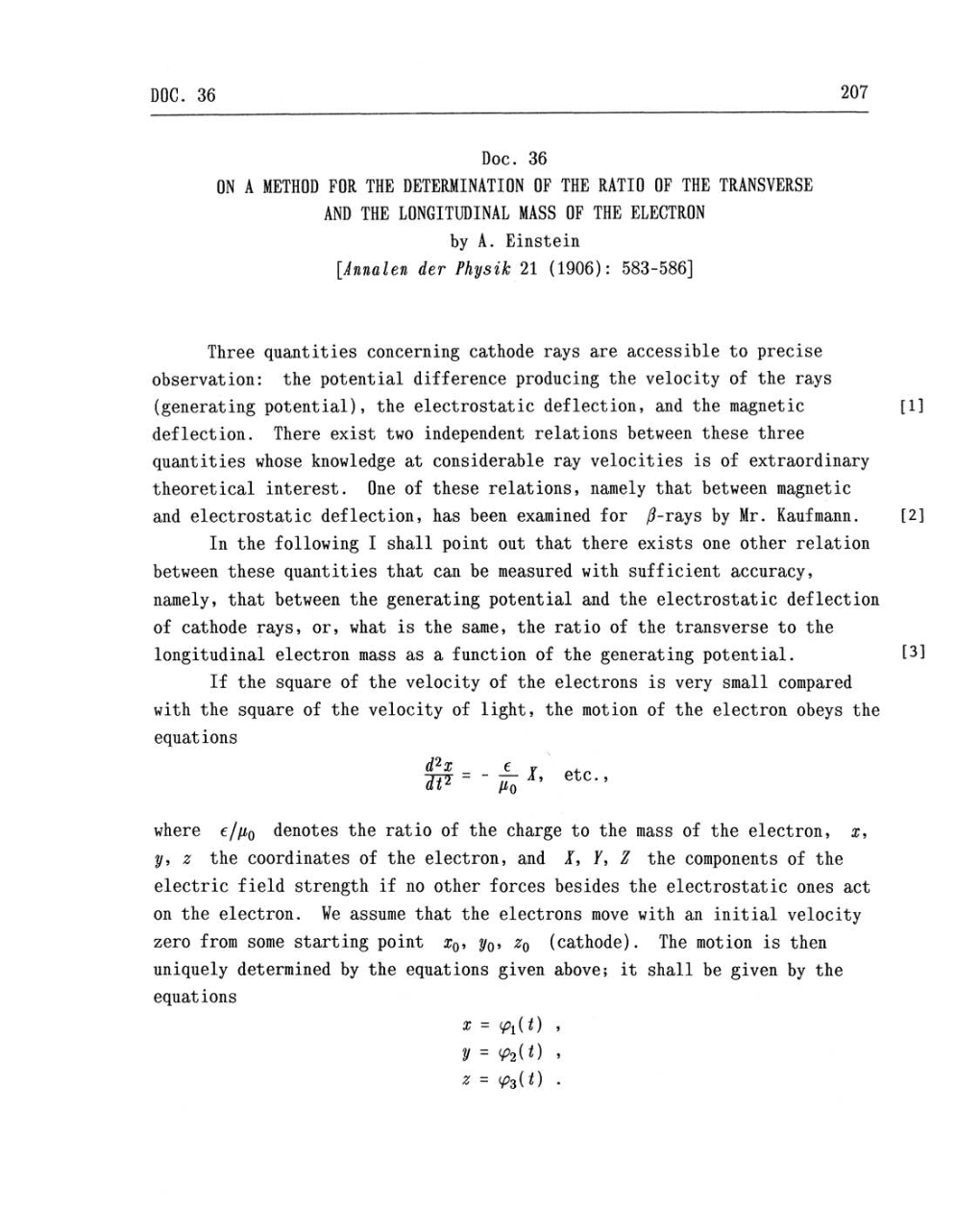DOC.
36
207
Doc. 36
ON A
METHOD FOR THE
DETERMINATION OF THE
RATIO
OF THE TRANSVERSE
AND
THE
LONGITUDINAL
MASS OF
THE
ELECTRON
by
A.
Einstein
[Annalen
der
Physik
21
(1906):
583-586]
Three quantities
concerning
cathode
rays
are
accessible
to
precise
observation: the potential difference
producing
the velocity of the
rays
(generating
potential), the electrostatic
deflection,
and
the
magnetic [1]
deflection.
There
exist
two
independent
relations
between
these three
quantities
whose
knowledge
at
considerable
ray
velocities is of
extraordinary
theoretical interest.
One
of these relations,
namely
that
between
magnetic
and
electrostatic
deflection,
has been examined
for
B-rays
by
Mr. Kaufmann. [2]
In
the
following
I
shall
point
out
that there exists
one
other relation
between
these
quantities
that
can
be measured
with sufficient
accuracy,
namely,
that
between
the
generating potential and
the electrostatic
deflection
of
cathode
rays,
or,
what
is the
same,
the ratio of the
transverse to
the
longitudinal
electron
mass as a
function
of
the
generating
potential. [3]
If the
square
of
the velocity of the electrons is
very
small
compared
with the
square
of
the
velocity
of light, the
motion of
the electron
obeys
the
equations
d2x
e
u0
X,
etc.,
where
e/u0
denotes the ratio
of
the
charge
to
the
mass
of
the
electron,
x,
y,
z
the coordinates
of
the
electron,
and
X,
Y,
Z
the
components
of
the
electric field
strength
if
no
other forces besides the electrostatic
ones
act
on
the electron.
We
assume
that the electrons
move
with
an
initial
velocity
zero
from
some
starting point
x0, y0,
z0
(cathode).
The
motion
is then
uniquely
determined
by
the
equations
given above;
it shall
be
given
by
the
equations
x
=
q1(t)
,
y
=
q2(t)
,
z
=
q3(t)
.
